One question not well understood in the world o' pika, is how the little characters select their winter haypile sites each season. Why do some sites that have been reused for years suddenly go quiet and not get used for multiple seasons, but then get reoccupied again? Is it mainly due to local population fluctuations from predation and like? How much do seasonal changes in temperature, and snow depth & duration affect selection and reuse? What about hierarchies and social order within the greater colony? Is there upward mobility to "better" neighborhoods?
To gain insights, along with cam traps at active haypiles, we've also set cams at inactive sites.
Here's an example from this season.
Camera trap set at an inactive pika haypile in early June:
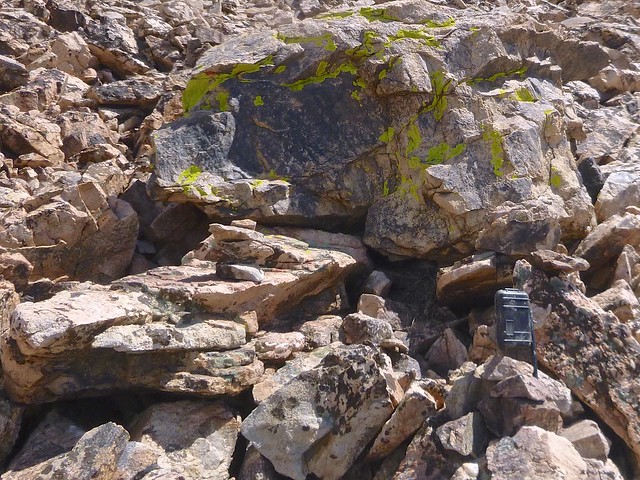
First to the scene was this marmot, who gave the cam quite a challenging glare. But we all know they're yellow-bellied.
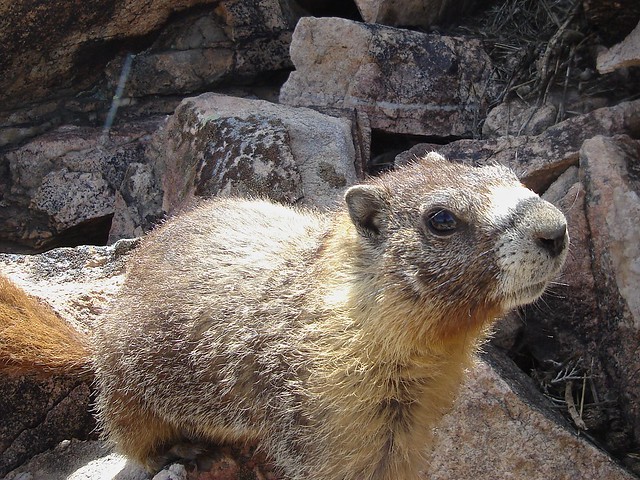
That face could almost be an internet meme.
At night, the deer mice came around.
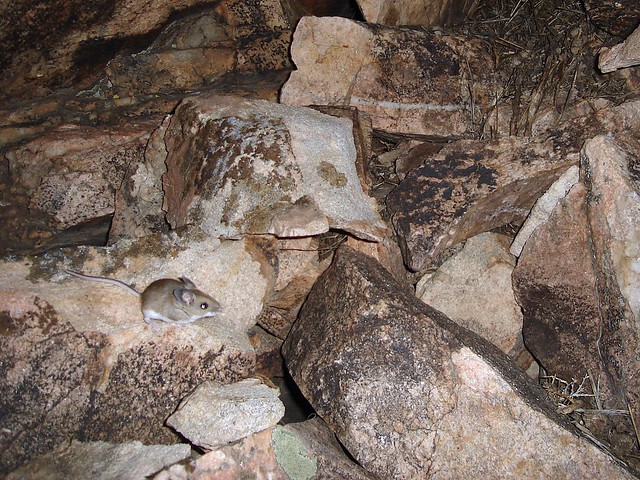
And then the cats showed up for a few days.


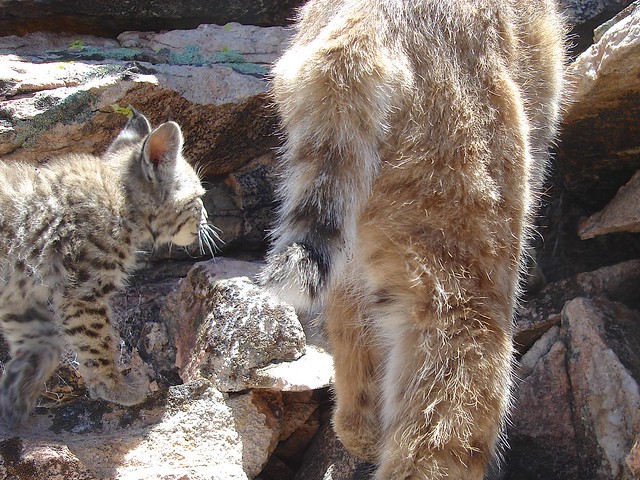
Awwwww. Definitely already an internet meme.
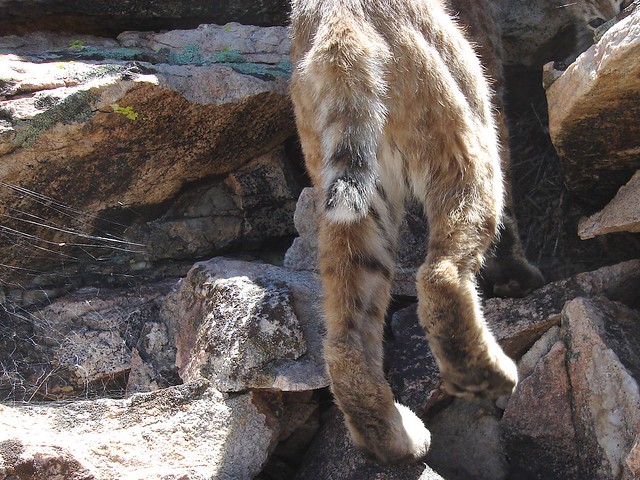
Note the little face in the upper right corner.
Once the cats were away, the deer mice came back to play.
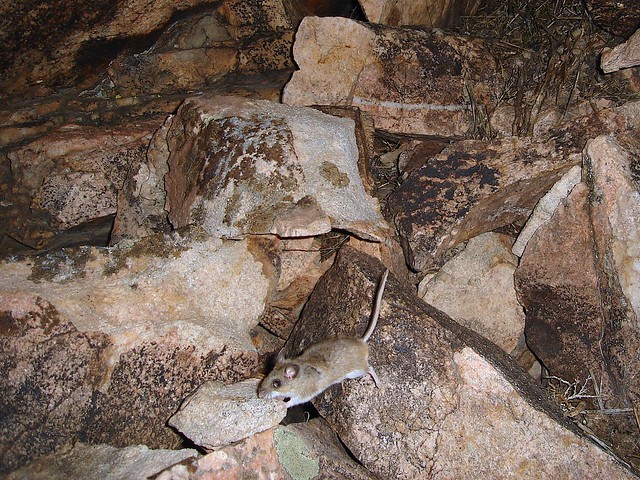
And even brought a distant relative - a sagebrush vole, Lemmiscus curtatus.

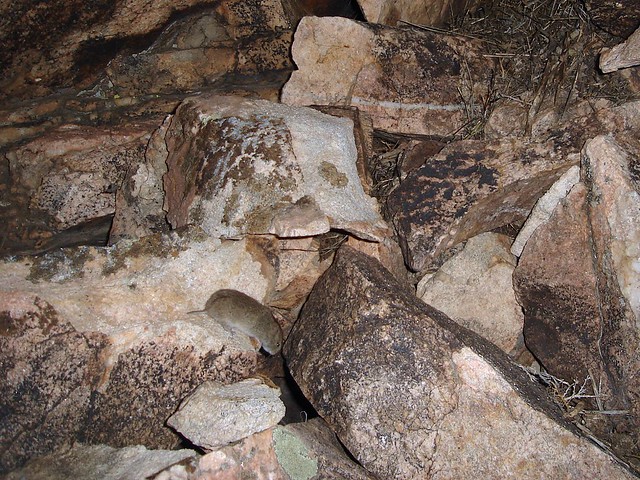
Voles are often called "meadow mice," but sagebrush voles live in the sagebrush scrub of the Great Basin, and often far from meadows, so that moniker doesn't fit very well.
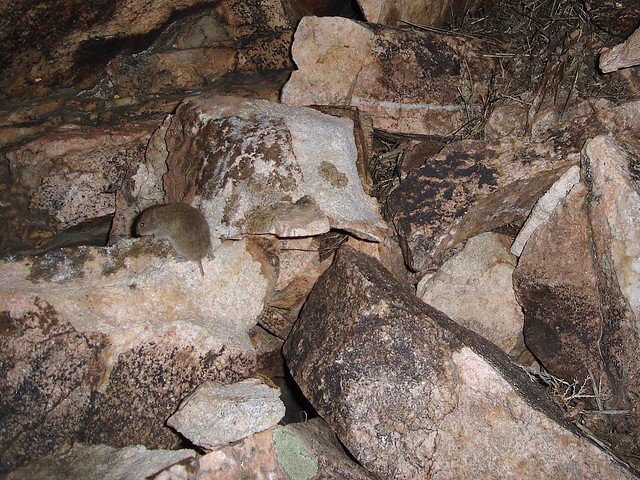
Pretty sweet little guys. Those teeny fuzzy ears and tail. Probably a reason they're so popular with predators - easy to eat whole. Their "self-seasoning" diet of sagebrush might also be a factor.
After about 7 weeks, at the end of July, the first pika showed up.
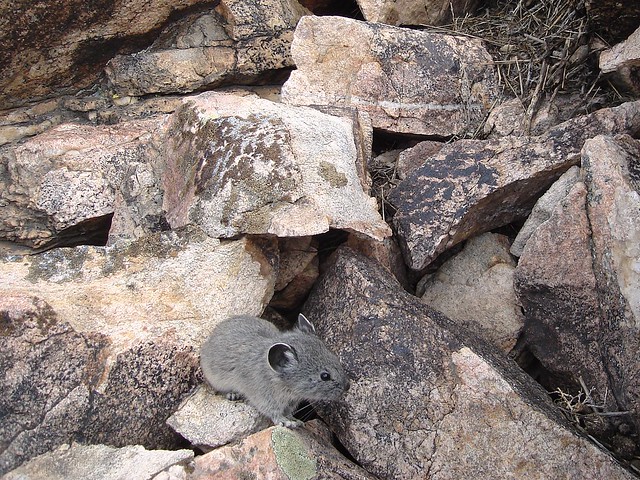
And seemed to hang around for 2 days.
The gray pelage, lack of scars, and mostly clean, nick-free ears suggest he/she might be a dispersing juvenile from the season. Timing is right.
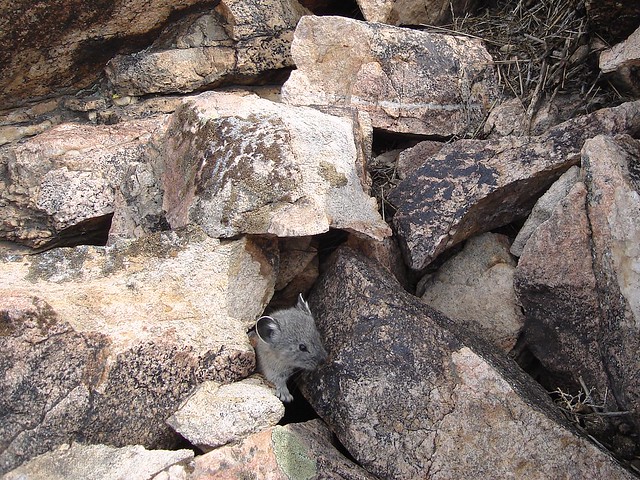
But then the pika left the place to the rodents again.
In this case a chipmunk. Perhaps Least or Lodgepole.
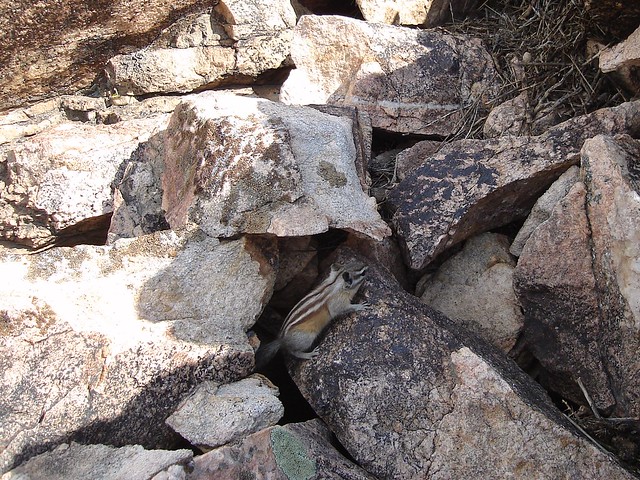
2 weeks later, what seems to be the same pika showed up again and stayed around for 3 days.

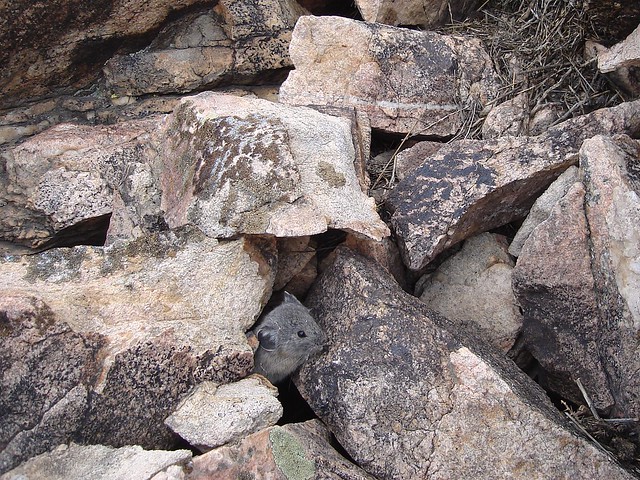
But then disappeared again, as quiet as a rock wren.
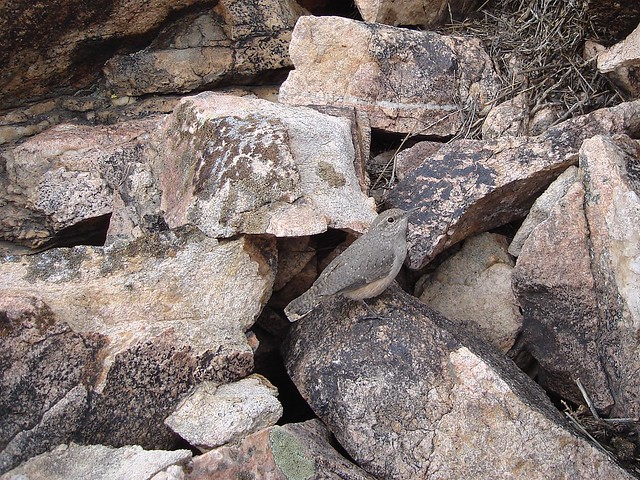
Uh oh - now the place has rats.
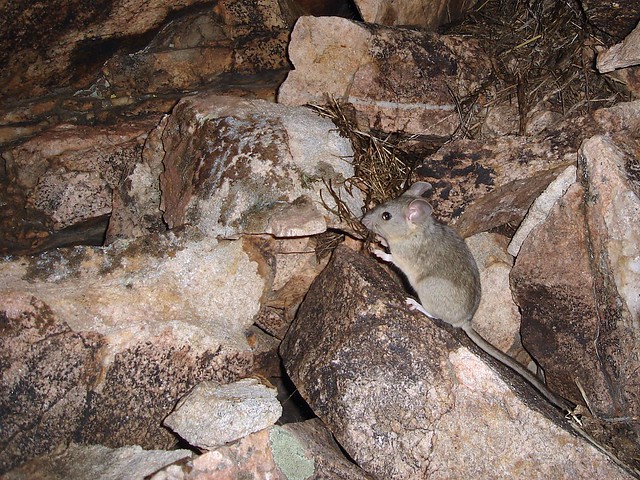
But not any old rat - a desert woodrat, Neotoma lepida. I would have predicted bushy-tailed woodrat for that rocky habitat.
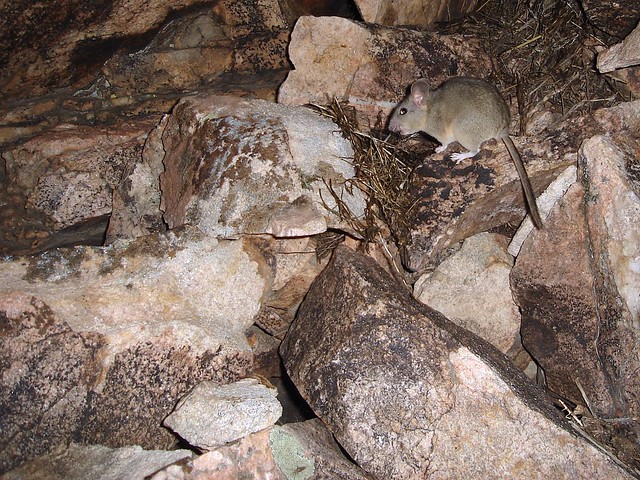
2 weeks later, the pika appeared yet again for a few cameos. Again, looking at the fine details suggest it's the same individual (but starting to molt). However, as before, he/she didn't stay and rebuild the haypile. And thus this season this pile once again remained inactive.
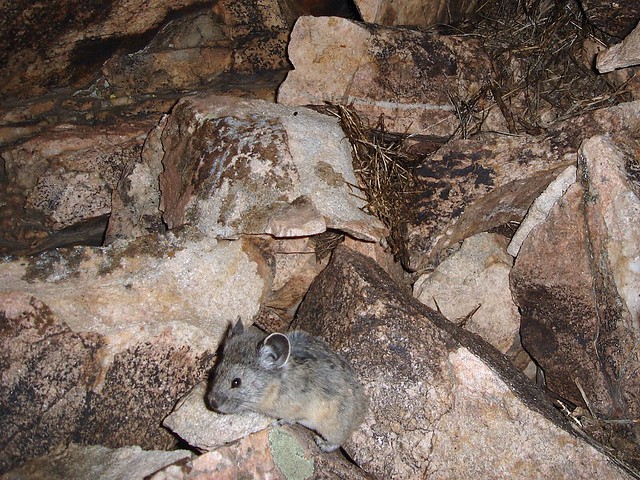
Wonder why? Still smell too much like bobcats & kittens? Found a better place? Were more pika eaten this season than born? Know something about this coming winter that we don't?
Mysterious little rabbit-kin.
If only you had a blog you could use to tell us your stories.
But I guess those can go inexplicably inactive for long periods of time as well.
====
References:
- Nature of a Man (this blog) - Rocky Relationships
- Nature of a Man (this blog) - Winter Readiness
- Nature of a Man (this blog) - Seasonal Activity Patterns
- Wikipedia - American pika
- Andrew Smith, Marla Weston - American Society of Mammalogists: Ochotona princeps
- Barbara Ivins, Andrew Smith - Behavioral Ecology and Sociobiology: Responses of Pikas to Naturally Occurring Terrestrial Predators
- Andrew Smith and Barbara Ivins - Z. Tierpsychol. (Journal of Animal Breeding and Genetics): Spatial Relationships and Social Organization in Adult Pikas
- Andrew Smith - Ecology: The Distribution and Dispersal of Pikas: a) Consequences of Insular Population Structure, and b) Influences of Behavior and Climate
- Andrew Smith and John Nagy - Journal of Mammalogy: Population resilience in an American pika (Ochotona princeps) metapopulation
- Donald Grayson - Journal of Biogeography: A brief history of Great Basin pikas
- Alexie McKenzie, Andrew Smith, and Mary Peacock - Journal of Mammalogy: Kleptoparasitism in Pikas (Ochotona princeps): Theft of Hay
==========

Does old hay accumulate? mold? Do pikas clean their sites? Nice to find a noam post this morning, entertaining as always.
ReplyDeleteThe herbage that isn't eaten or pilfered breaks down surprisingly fast from snow, mold and desiccation cycles. There is generally nothing but a base of sticks and twigs left after winter. And pika do tend and clean their haypiles, but only when building or using them, and once the snow covers the talus and haypile, just from the inside and below.
DeleteCute baby Bob. Without knowing much I too am surprised by the desert wood rat and would have guessed bushy-tailed. Interesting observation. You got quite the array of species at this little hideout.
ReplyDeleteIt's so cool to see everybody in the neighborhood come by for their portrait. The rock rabbits remain a mystery, for now. Could they be moving their haystacks around due to infestations of mites or other insects? Maybe to mix up the predators? Thanks for sharing this set, Mr. Truth.
ReplyDeleteGreat photos as usual Ken.
ReplyDelete